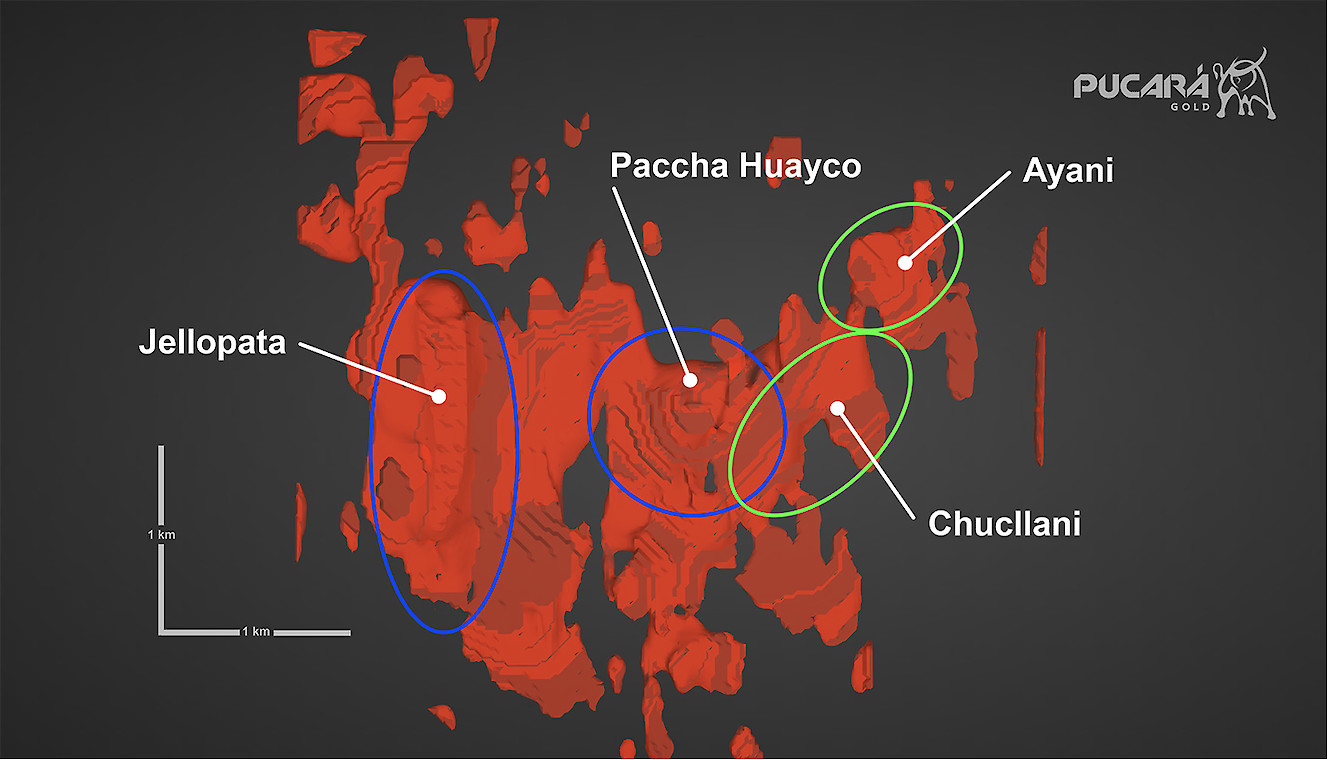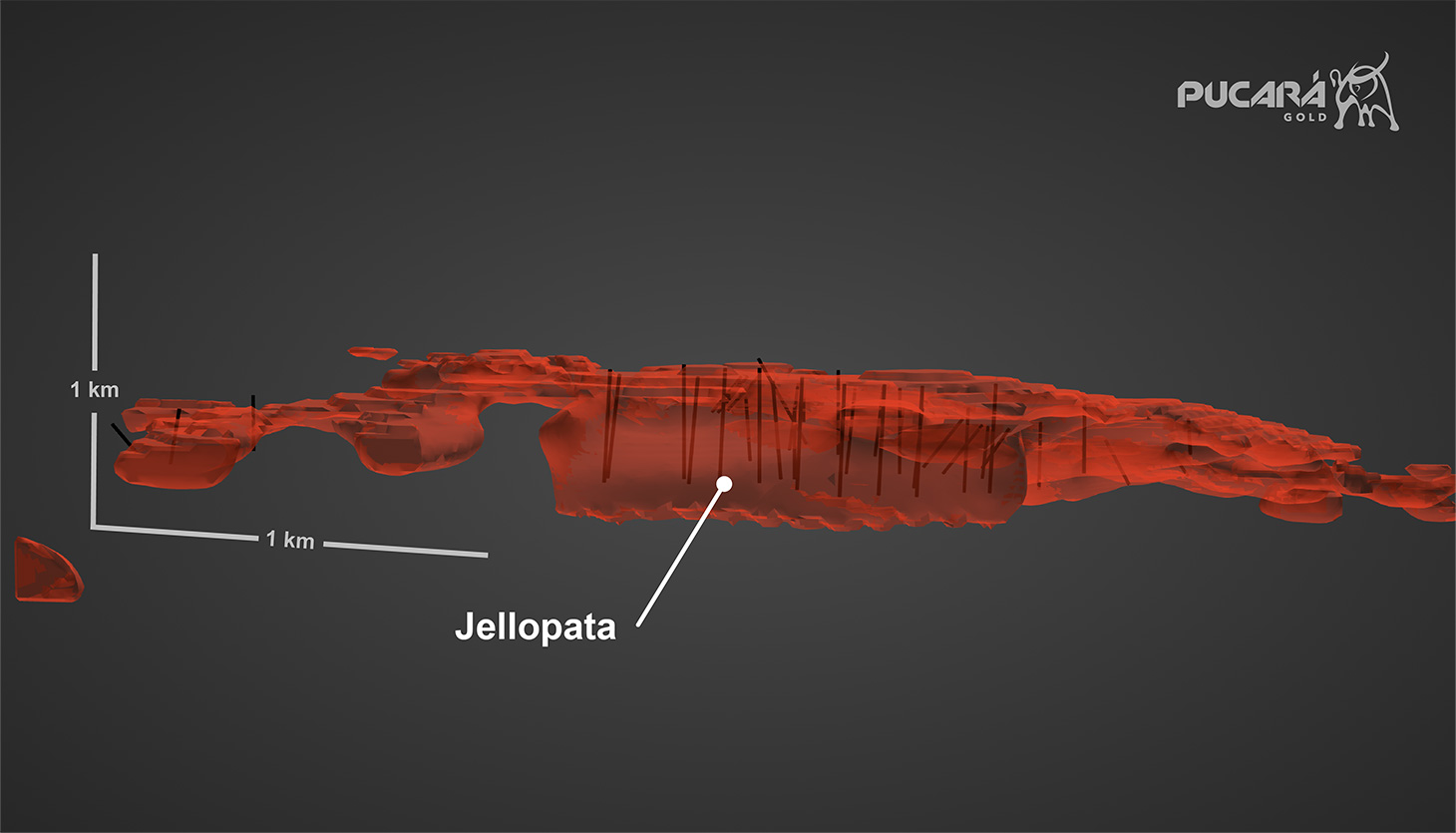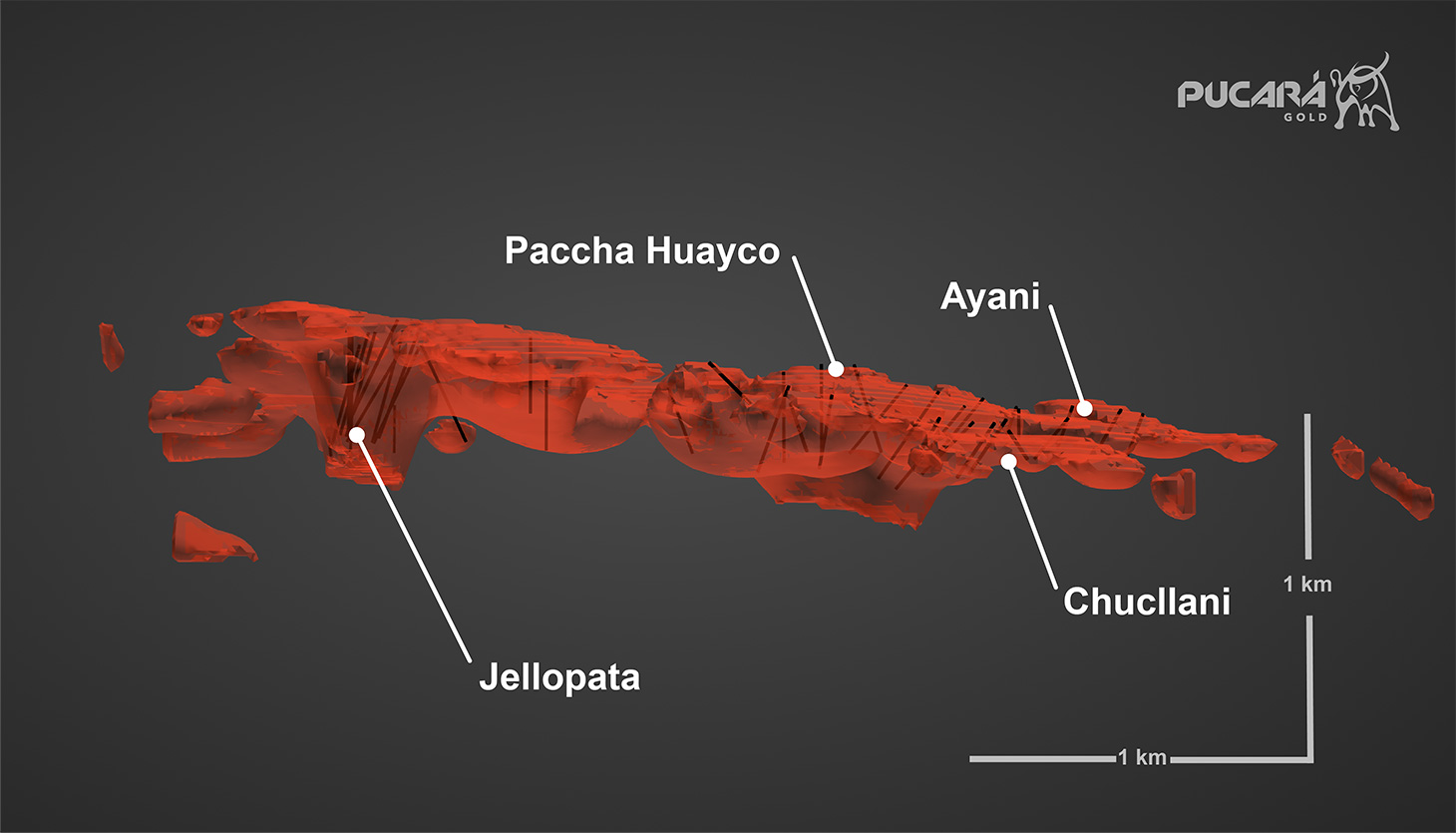Summary
- Pucara Gold has commenced its Phase 1 drilling campaign at the Lourdes Gold Project and expects to release initial drill results by December 2020
- CEO, Steve Zuker, and VP Exploration, Ken Balleweg, have traveled to the Lourdes Gold Project to oversee the start of the drill campaign
- Phase 1 consists of 5000 meters in 20 reverse circulation holes and will focus on four high priority target areas within the Lourdes Gold Project
- The focus of Phase 1 drilling will test the Jellopata and Paccha Huayco diatremes and the Chucllani and Ayani zones where gold-bearing granular silica has been sampled in outcrop
- Road access to four target areas completed with 12 drill sites constructed
Vancouver, British Columbia | Pucara Gold Ltd. (“Pucara Gold”, “Pucara” or the “Company”) (TSXV: TORO) is pleased to announce that it has commenced the Lourdes Gold Project drill campaign. Nine primary target areas have been identified for drill testing in the project area. Selection criteria include size and intensity of the hydrothermal alteration, presence of multiple alteration and brecciation events, strong structural control, anomalous rock and/or soil geochemical response, large IP resistivity anomalies, and large deposit size potential. Target areas are predominantly diatreme centers and/or broad structural zones or a combination of both. The first phase of the program consists of 20 holes (5000m) testing four target areas; Phase 2 consists of 16 holes (2650m) that include the remaining five target areas. Eleven additional sites are included in the proposed plan to allow for follow-up infill and step-out drilling with the 40 sites allowed by permit.
“We at Pucara have been anticipating drilling Lourdes for the last four years since the initial identification of the Lourdes diatremes by Ken Balleweg and their control on potential mineralization. We have followed-up with detailed geologic mapping, geochemical sampling, and re-interpretation of the IP geophysics to focus in on specific drill targets. Every bit of information compiled to date has continued to grow our excitement in the exploration potential at Lourdes,” stated Steve Zuker, CEO of Pucara, “Now with drill permits in hand and capital from our summer financing we are finally able to initiate our drill program and determine if Lourdes is the next great Peruvian gold discovery that we hope it to be.”
“We’ve been anxiously waiting to drill these targets for more than two years,” stated Ken Balleweg, VP of Exploration, “The project has had a tremendous amount of exploration work done prior to drilling with the generated data consistently pointing to the same target areas. It’s exciting to see the first drill holes in progress and we will be anxiously awaiting the results.”

Figure 1. Lourdes project hydrothermal alteration, diatreme breccias, and Phase 1 drill targets.

Figure 2. Three dimensional rendition of the Lourdes Project IP resistivity anomaly in plan view.
Target # 1: Jellopata
The Jellopata target, located in the western portion of the project area, is the largest identified in the Lourdes hydrothermal system and believed to have the highest potential for a large, multi-million-ounce gold deposit. The target consists of a 1.2km long, 300m wide north-south trending, near-surface zone of high IP resistivity that is interpreted to be silicic alteration within a large structurally controlled diatreme. The Jellopata zone trend is parallel to and within the Apumayo mineralized trend, which is interpreted to be the primary controlling structure. Multi-stage granular silica breccias and advanced argillic alteration containing high temperature pyrophyllite clays overly the IP resistivity anomaly. Stratiform cryptocrystalline silica overlies the northern portion of target area. The Jellopata target is at the highest elevation in the Lourdes system (4350m), with a surface alteration assemblage characteristic of high levels of high sulfidation gold deposits. The exposure level is believed to be above the zone of gold deposition, but weak soil gold and arsenic anomalies overly and support the concept of a shallow blind target. The IP resistivity anomaly is funnel-shaped consistent with the morphology of the exposed diatremes and vents, with the inferred feeder portion extending to below 4000m elevation.
A distinct concave-upward zone of anomalous low chargeability is present within the northern 600-800m of the IP resistivity anomaly, interpreted as a zone of strong oxidation extending to at least 200m below the surface. This area is believed to be the most prospective for gold mineralization due to deep oxidation commonly found where the brecciation and resulting porosity and permeability is the highest.

Figure 3. Three dimensional rendition of the Jellopata IP resistivity anomaly and proposed drill holes showing structural and stratiform morphologies, view to east.
Target # 2: Chucllani
The Chucllani target area is a broad area of intense alteration on the northeast side of the Lourdes system consisting of four separate target areas over approximately 800m of strike length. It has similarities to the Apumayo group of gold deposits being mined 14km to the south. The primary drill target consists of a >200m long, >75m wide northeast-trending zone of granular silica alteration with outcropping gold mineralization up to 0.64 g/t Au. A secondary target exists 200m to the northeast along zone trend where gold-bearing (up to 1.7 g/t Au) granular silica outcropping within a prominent ravine. A strong westerly-plunging IP resistivity anomaly that is believed to be the east margin of the Paccha Huayco diatreme is also targeted from this area. The Chucllani target area exhibits moderate to strong anomalous soil gold and pathfinder element response.
Target # 3: Ayani
The Ayani zone is located at the extreme northeastern portion of the Lourdes system and consists of a 700m long and up to 150m wide structural zone of silicified breccias with proximal stratiform silicic alteration, a vent breccia with chalcedonic silica at the upper portions, and gold-bearing granular silica breccia. Gold-bearing granular silica (up to 0.87 g/t Au) is exposed at the edge of colluvial cover in the lower portions of the zone, suggesting that the colluvium may be concealing additional non-resistant mineralized granular silica. Soil gold and arsenic anomalies appear to be sourced in the zone.

Figure 4. Lourdes three dimensional IP resistivity anomaly viewed to the north showing the Jellopata and Paccha Huayco diatremes and lateral stratiform silicic alteration, locally gold-bearing in the outcropping portion of the Ayani and Chucllani Zones.
Target # 4: Paccha Huayco
The Paccha Huayco target is in the central part of the Lourdes system and is the second largest in the project area. It occurs at the three-way intersection of the dominant structural trends on the property: the north-south Apumayo trend, the northwest fold axis trend, and the northeast Ayani structural trend. The target area is underlain by a large funnel-shaped IP resistivity anomaly that is interpreted to be a diatreme like the Jellopata target. The anomaly and inferred diatreme are elliptical in plan, 1000m long within the Ayani structural zone and up to 500m wide. The IP resistivity anomaly occurs below pervasive strong advanced argillic alteration with structurally controlled granular and massive silica. Soil gold and weak rock chip gold anomalies occur on the west and southeast flanks of alteration overlying the IP resistivity anomaly. The surface alteration assemblage is high-level, consisting of chalky, possibly steam-heated granular silica and cryptocrystalline silica inferred to be above the level of gold deposition.
About Lourdes Gold Project
The wholly-owned Lourdes Gold Project is a fully-permitted high sulfidation epithermal precious metal project, which lies at the intersection of two regional mineralized trends with neighboring high sulfidation prospects and a producing mine. Lourdes covers a highly prospective contiguous area of 2,576 hectares that had received minimal prior exploration and has not been previously drill tested. Pucara has identified a complex of nested diatremes, vent breccias, and breccia bodies at Lourdes that are similar in size and associated alteration to the high sulfidation epithermal gold deposits at Yanacocha and Pierina in northern Peru, and the Mulatos district of Mexico. The property is approximately 400 kilometres southeast of Lima and is easily accessible by a paved, single-lane road originating in the town of Puquio, 155 kilometres east of the Pan American Highway.
About Pucara Gold
Pucara Gold is a well-financed junior exploration company focused on the discovery and advancement of economic precious metals deposits in resource-rich Peru. Pucara has a portfolio approach to project acquisition and controls nine precious and base metal projects, including its flagship Lourdes Gold Project, located in Ayacucho, Peru. Pucara is advancing six projects while the remaining three are under option agreements with strategic partners. Pucara plans to grow through discoveries, strategic relationships, and grassroots exploration.
|
QUALIFIED PERSON The Lourdes exploration program is conducted under the direction of Ken Balleweg, P. Geol., BSc. Geological Engineering, M.S. Geology, Registered Professional Geologist, Pucara’s Vice President of Exploration and a Qualified Person as defined by NI 43-101 of the Canadian Securities Administrators. |
|
Contact Information |
J. Stevens Zuker CEO, Director info@pucaragold.com |
Cautionary Statements
Neither the TSX Venture Exchange nor its Regulation Services Provider (as that term is defined in the policies of the TSX Venture Exchange) accepts responsibility for the adequacy or accuracy of this release. This news release includes forward-looking statements that are subject to risks and uncertainties. All statements within, other than statements of historical fact, are to be considered forward looking. Although the Company believes the expectations expressed in such forward-looking statements are based on reasonable assumptions, such statements are not guarantees of future performance and actual results or developments may differ materially from those in forward-looking statements. Factors that could cause actual results to differ materially from those in forward-looking statements include market prices, exploitation and exploration successes, the impact of the COVID-19 pandemic on the worldwide economy, continued availability of capital and financing, and general economic, market or business conditions and regulatory and administrative approvals, processes and filing requirements. There can be no assurances that such statements will prove accurate and, therefore, readers are advised to rely on their own evaluation of such uncertainties. We do not assume any obligation to update any forward-looking statements.

